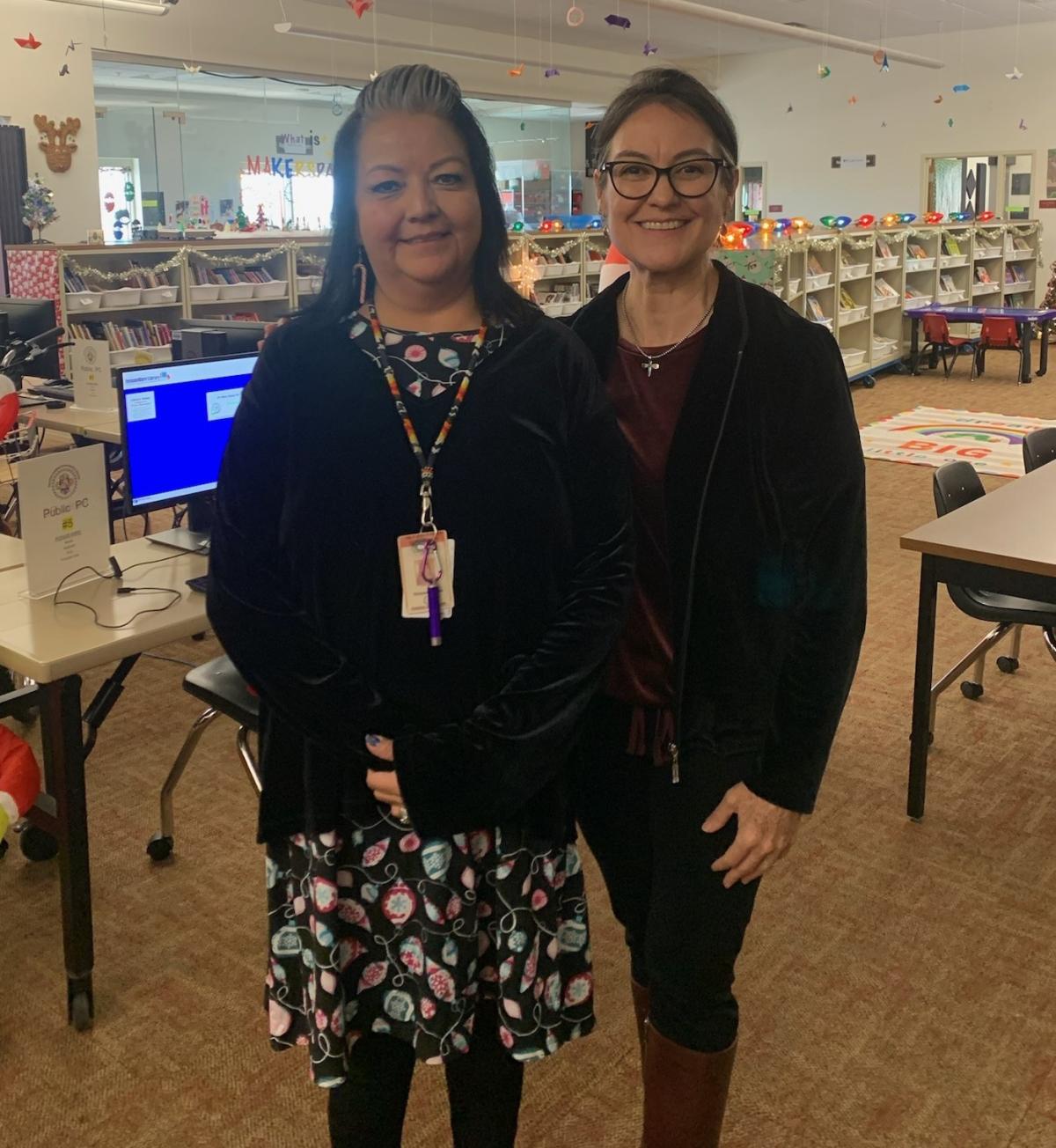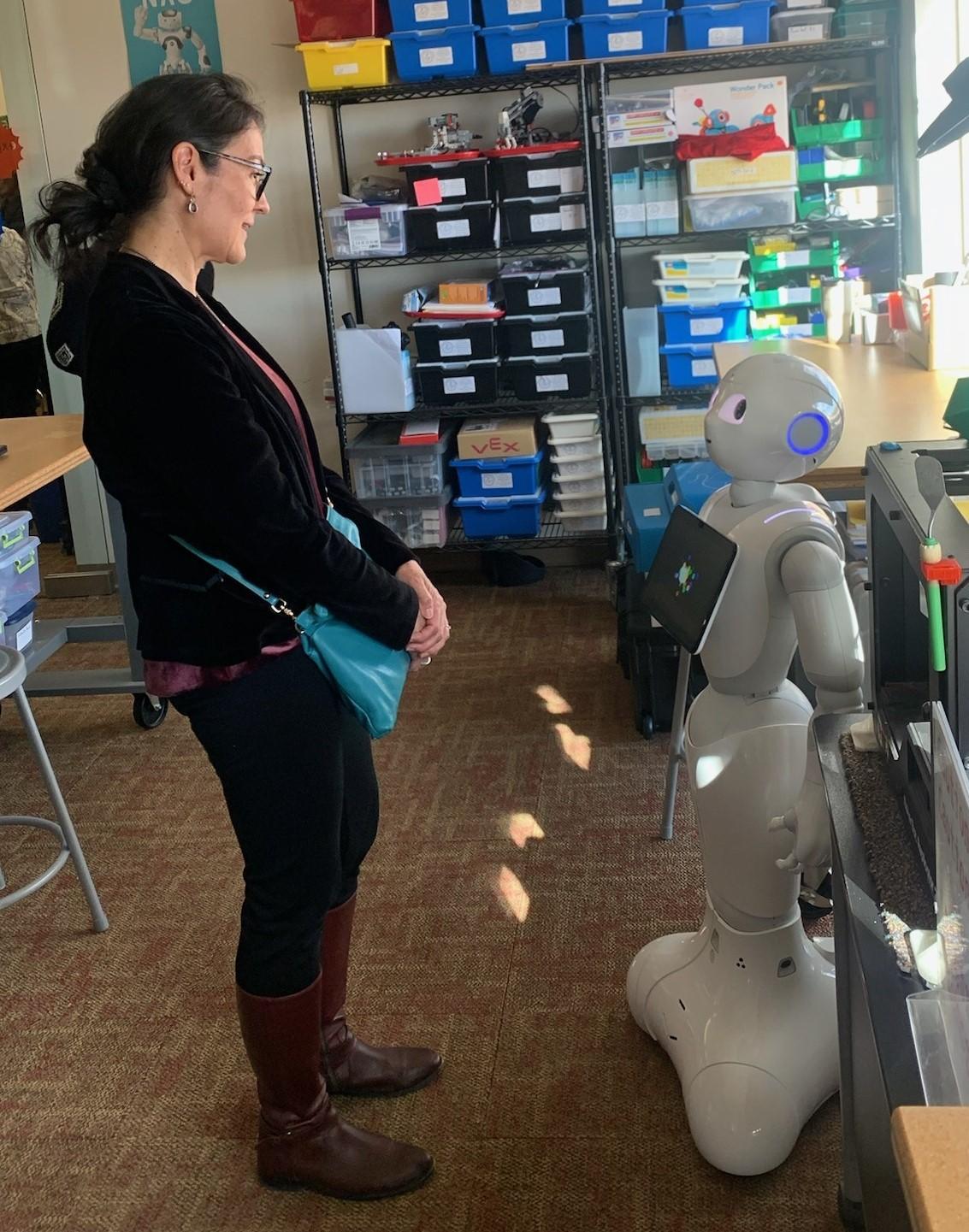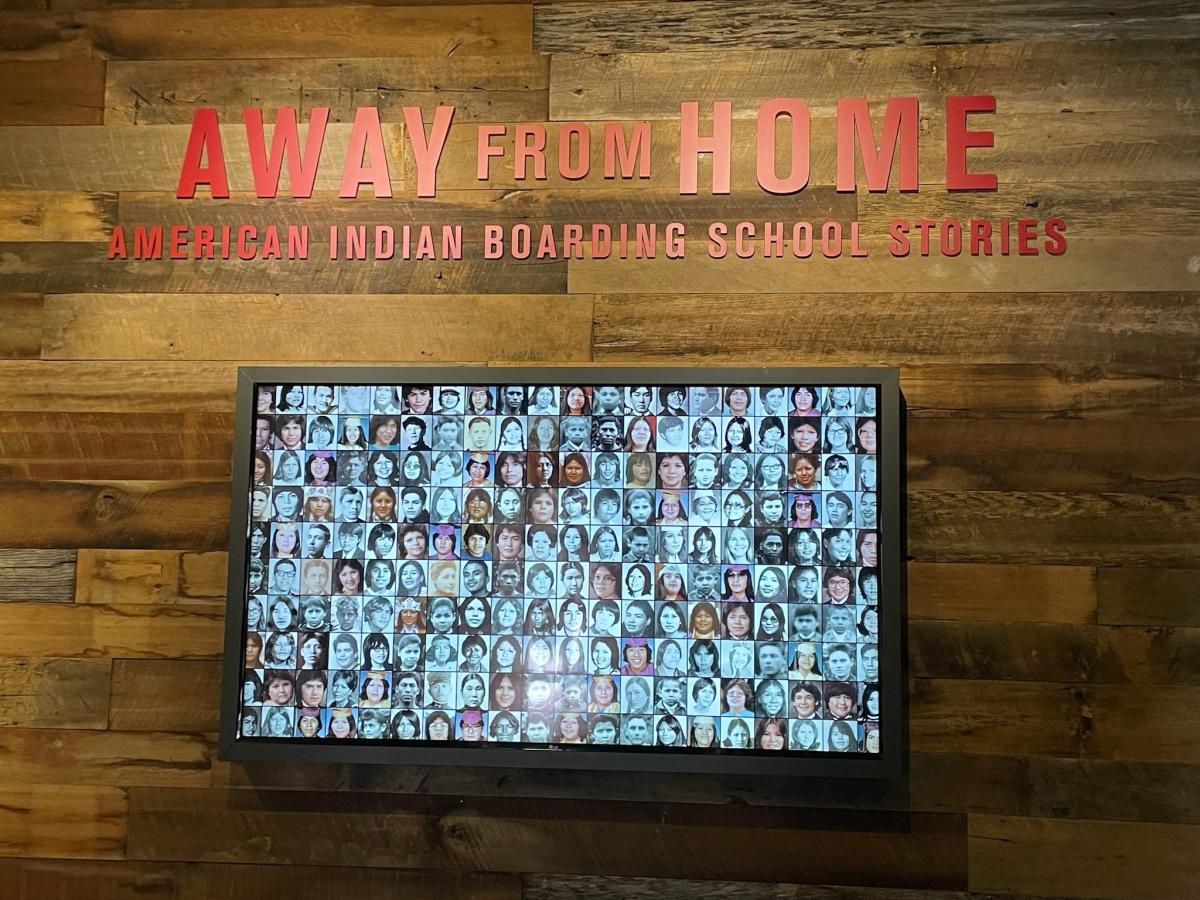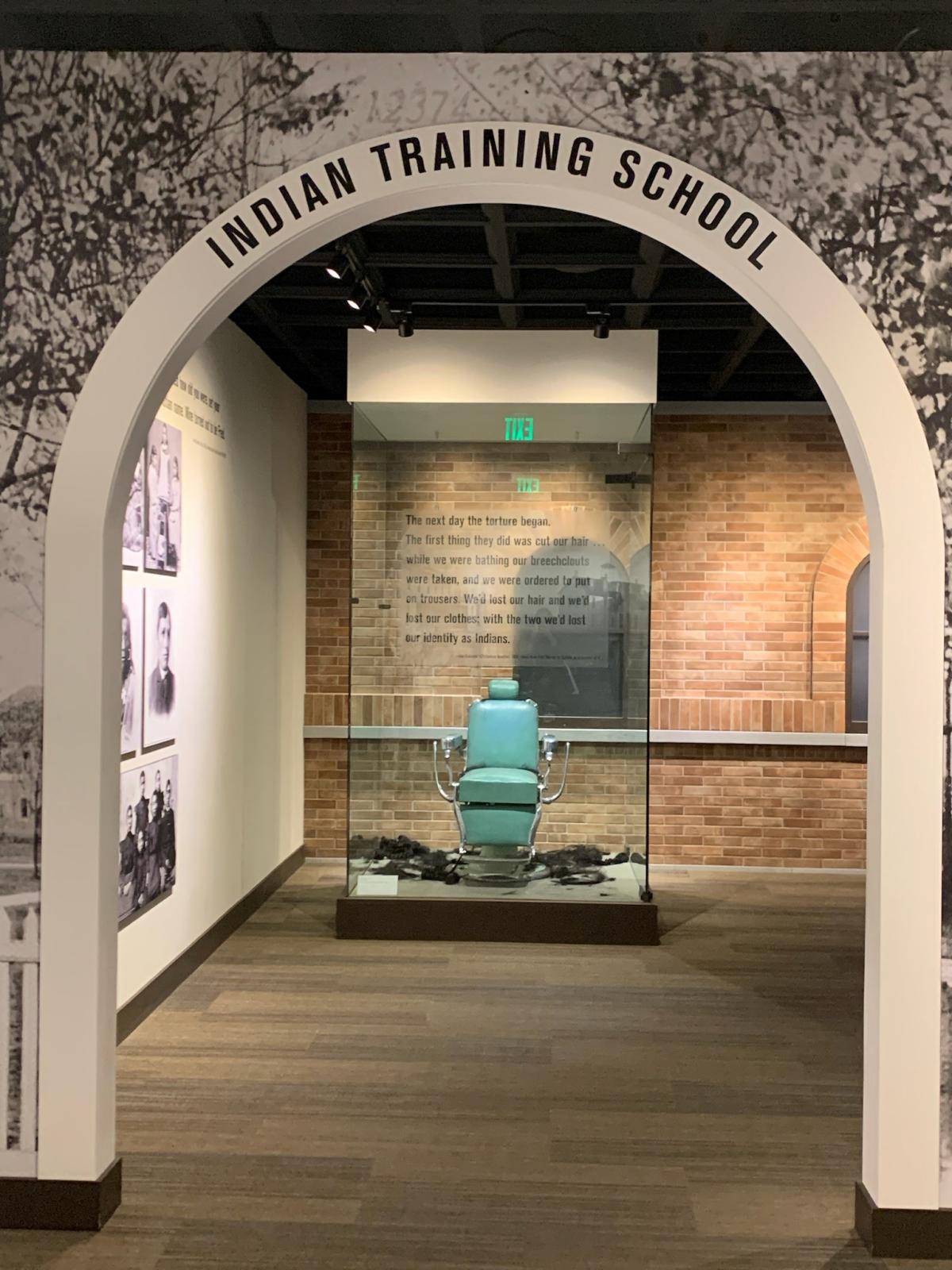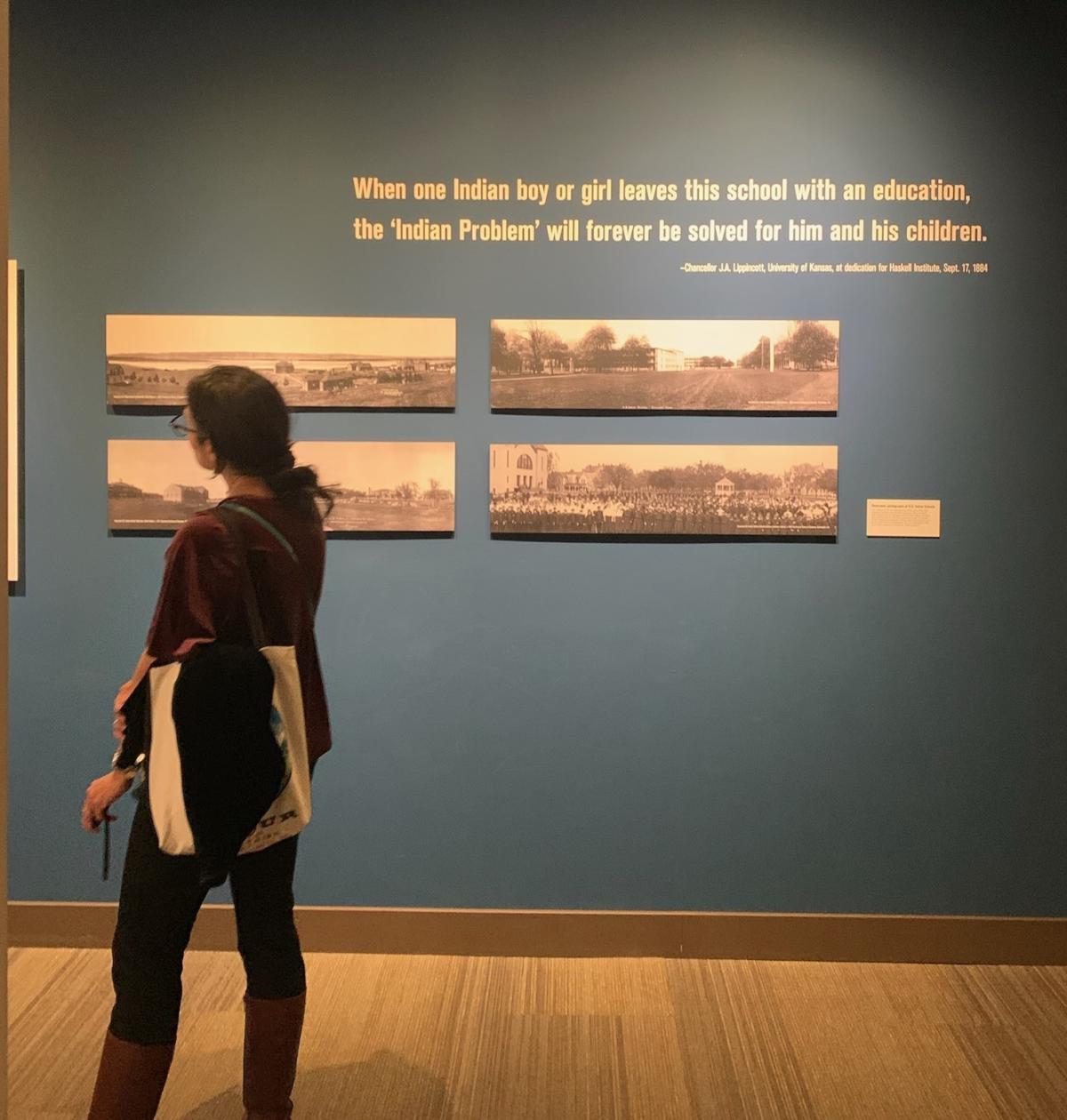Chair's Travel: NEH and IMLS in Arizona

NEH Chair Shelly C. Lowe (Navajo) with Ak-Chin Community Library staffer, Milo.
photo by Maya Noto

NEH Chair Shelly C. Lowe (Navajo) with Ak-Chin Community Library staffer, Milo.
photo by Maya Noto
(PHOENIX)— On December 12, 2023, National Endowment for the Humanities (NEH) Chair Shelly C. Lowe (Navajo) traveled to Arizona to join the Institute of Museum and Library Services (IMLS) on a tour of the Ak-Chin Indian Community and the Heard Museum in order to gather firsthand feedback from tribal organizations on the impact of federal cultural grants in Native communities.
One of 22 federally recognized tribes in Arizona, the Ak-Chin Indian Community has more than 1,100 enrolled members across 22,000 acres in southern Arizona’s Santa Cruz Valley. Chair Lowe’s first stop was at the Ak-Chin community library, where she and her ILMS colleagues were welcomed by Robert Miguel, chairman of the Ak-Chin Indian Community, who described the library as “an asset to kids and adults for the opportunity to learn their history, find their identity as our people, a community, and in the United States.”
The group heard from librarian Melanie Toledo about IMLS-supported library initiatives to use digital devices to increase youth literacy and expand Ak-Chin community members’ access to books through technology.. Toledo described a service where tribal elders were able to text, call, or email the library and request a book title. She then would order that title to a tablet device, provided by the IMLS grant funds, and have the tablet ready to read within the hour. Toledo added that the tablets increased shelf space and served other uses when they weren't reserved, especially for youth programming.
“It has been wonderful to be able to see the work that the library has been doing,” said Chair Lowe. “The really important part of these visits [is that] we get out into these communities, that we see for ourselves the work that federal funding is promoting and the impact that it is having in these communities”.
Toledo develops community programs that cater to the unique needs of her tight-knit, rural community. Among the other services offered by the Ak-Chin library is a unique take on a bookmobile, a transportable library pulled by bicycle. Milo, a beloved library staffer, can be seen peddling books at the local park or recreation center. An after-school literacy program provides one-on-one reading lessons to Ak-Chin youth who read below grade level. IMLS Library Services and Technology Act funding also allowed the library to purchase hot spots so that community members could attend school online, create a makerspace outfitted with a 3D printer and a helpful library robot to assist community users, and set up a recording studio with instruments and production equipment.
“We need to be hearing directly from the community members,” said Chair Lowe. “We need to see where they are and how they are, how they are sometimes limited in their geography in the work that they are doing, or how sometimes their resources are a little bit different from what we normally think about and have available to humanities institutions or museums and libraries. . . . We need to understand how our grants fit the needs of the institutions that are in these communities.”
The group also stopped at the Ak-Chin Him-Dak Eco-Museum, dedicated to preserving, promoting, and teaching aspects of the Ak-Chin heritage and culture. Distinct from other traditional museums, Ak-Chin Him-Dak Eco-Museum styles itself as a living institution where community members take on the roles of curator and the public, bringing artifacts, photos, oral histories, or other tribal crafts to the museum to be displayed there.
There, Chair Lowe toured its current exhibition, which focuses on “Base Roll,” referring to the Ak-Chin Indian Community members whose names were recorded in the official census taken in 1940. The exhibition space features a wall-to-wall display of Base Roll tribal members. Sticky notes have been added in places where a new name has been found. Lines drawn in marker connect rediscovered family ties, alongside family artifacts and information on “blood quantum”—the system used to quantify eligibility for tribal citizenship. Visitors are able to visualize how quantum levels are calculated through an interactive “pie chart,” where various-sized “slices” represent measurements of Indian blood, and place the pieces together to create a complete circle.
Chair Lowe’s visit with Ak-Chin community members is part of her broader outreach to Native organizations and NEH’s efforts to expand collaborations with Indigenous communities. “It’s been such an honor to join the IMLS Board to see some of the work we are doing in tribal communities,” said Chair Lowe. “I came into my position in February of 2022, and I made it clear that the work of these federal agencies, particularly the NEH, has really needed to expand how we serve Native communities.”
NEH American Rescue Plan funding to the Association of Tribal Archives, Libraries, and Museums (ATALM) provided $3.71 million for 118 grant awards to Native cultural organizations in 29 states for exhibitions, language programs, and archival documentation and preservation efforts. In April 2023, NEH partnered with the Department of the Interior (DOI) on the NEH-DOI Federal Indian Boarding School Initiative, committing $4 million to support the digitization of federal Indian boarding school records and the creation of a permanent oral history collection. Chair Lowe also created a special opportunity for federally recognized Native American tribal governments, nonprofits, and state and local governments to apply for a special NEH Chair’s Grant of up to $30,000 for research, community engagement, tribal history collection, public programs, and educational projects examining the impact of federal Indian boarding school policies. “It’s important for us as federal agencies now to say ‘what do we need to do now to bring the communities back and their languages back, to bring their culture back, to support that work that they are doing,’” said Chair Lowe, “and to infuse resources into that work to bring into the future.”
Later that afternoon, Chair Lowe visited the Heard Museum and toured the NEH-funded exhibition “Away From Home: American Indian Boarding School Stories,” which examines the forced assimilation of American Indians by the widespread removal of Native children from their homes and families to government-operated boarding schools—a process that began in the 1870s. This permanent exhibition features first-person interviews, immersive models of boarding school dormitories, touch-screen interactive virtual maps, and collections of clothing from generations of students who attended federally run boarding schools. A section on arrival at the schools includes a barber’s chair where new students had their hair—spiritually symbolic for many Native cultures—cut upon entry, accompanied by “before” and “after” photos of students in Native garb and school uniforms. The exhibition also describes the schools’ emphasis on vocational training, staff treatment of students’ homesickness, and the waves of illnesses, such as tuberculosis, that swept through the schools. Recent investigations by the Department of the Interior have found that between 1819 and 1969, 408 federal Indian boarding schools operated across the United States. In Arizona, the Phoenix Indian School was officially closed in 1990.
NEH grants to the Heard Museum supported both the original installation of “Away From Home” in 2000, and the renovation, expansion, and reopening of the exhibition in 2019.
“Away From Home” has also been adapted into a smaller traveling exhibition that will tour libraries, museums, and historical societies across the country through 2025.
The following day, Chair Lowe participated in the IMLS public board meeting at the Phoenix Art Museum, where she discussed her perspective as the first Native chair of NEH, and the Endowment’s work with tribal communities, particularly in the documentation and revitalization of Native languages.
--by Maya Nota

